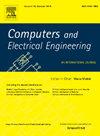Enhancing predictive accuracy using machine learning for network-on-chip performance modeling
IF 4
3区 计算机科学
Q1 COMPUTER SCIENCE, HARDWARE & ARCHITECTURE
引用次数: 0
Abstract
Network-on-Chip (NoC) is a promising, scalable interconnect solution of System-on-Chip (SoC) designs for high-performance computing platforms. The critical metrics, such as latency, throughput, and the number of packets received, directly impact the overall performance of NoCs. However, a cycle-accurate simulator takes considerable execution time with system size. This work proposes a machine learning approach with various regression models to predict critical metrics for network-on-chip-based architectures. The proposed work explores Polynomial regression (PR), Linear regression (LR), and Decision tree regression (DTR) models to predict linear and non-linear performance metrics. The obtained results are compared with the dataset generated from a cycle-accurate simulator. The experimental results showed an accuracy of 99% for linear and up to 98% for non-linear outputs with a maximum speed of around 3600x compared to a cycle-accurate simulator. Testing our model with SPLASH-2 and PARSEC real and synthetic benchmarks outperformed the existing works due to the convincing nature of real traffic.
求助全文
约1分钟内获得全文
求助全文
来源期刊

Computers & Electrical Engineering
工程技术-工程:电子与电气
CiteScore
9.20
自引率
7.00%
发文量
661
审稿时长
47 days
期刊介绍:
The impact of computers has nowhere been more revolutionary than in electrical engineering. The design, analysis, and operation of electrical and electronic systems are now dominated by computers, a transformation that has been motivated by the natural ease of interface between computers and electrical systems, and the promise of spectacular improvements in speed and efficiency.
Published since 1973, Computers & Electrical Engineering provides rapid publication of topical research into the integration of computer technology and computational techniques with electrical and electronic systems. The journal publishes papers featuring novel implementations of computers and computational techniques in areas like signal and image processing, high-performance computing, parallel processing, and communications. Special attention will be paid to papers describing innovative architectures, algorithms, and software tools.
 求助内容:
求助内容: 应助结果提醒方式:
应助结果提醒方式:


